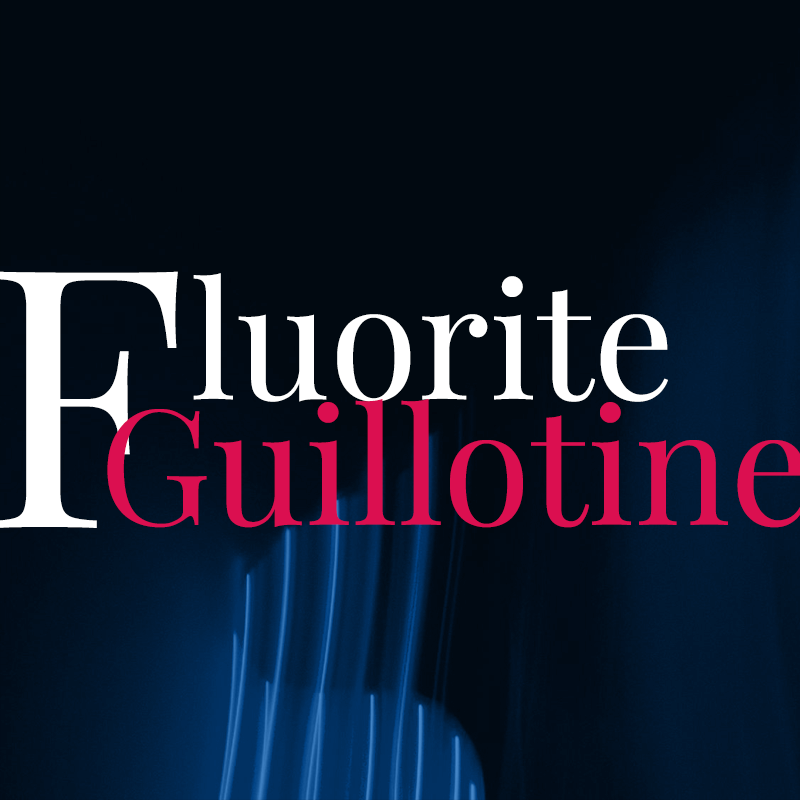Earlier this year I joined forces with some folks over at PaperCult to play new rpgs together, working through our backlogs to “Meet the RPG”. The first game we played together was Break!!, a lighthearted adventure fantasy game by Reynaldo Madriñan and Carlo Tartaglia. Though the full and correct title of this game is “Break!!”, I will be abbreviating the two exclamation marks for most of this blog post to keep things less confusing.
Break describes itself as a “game of exploration and adventure set in the fantasy realm of Outer World, a place of wonder and peril.” It is a game explicitly inspired by manga, anime, and videogames with a list on page 7 including entries from Final Fantasy to Studio Ghibli. In addition to the classic lineup of fantasy species such as elves and dwarves, Break commits to the genre by establishing catgirls and humans from other dimensions — isekai protagonists. Together with this species, players select a “Calling” which determines the abilities and base statistics for their character, from the humble Factotum to the edgy Murder Princess. From there, character creation adds additional layers of flavor based on homeland, history, and “quirk”. Each of these options provides a small mechanical change to the character like making you immune to a specific status or giving you advantage on “Performing back-breaking labor”.
Mechanically, the game functions on a core of rolling 1d20 under a target number. This is somewhat twisted due to the fact that combat rolls are still over an enemy’s defense value, in addition to all rolls having the chance to gain “edges, snags, bonuses, and penalties”. Edges and snags are the mechanic for rolling twice and taking the better or worse result; bonuses and penalties come in minor and major magnitudes, granting a static modifier of 2 or 4 in their respective directions.
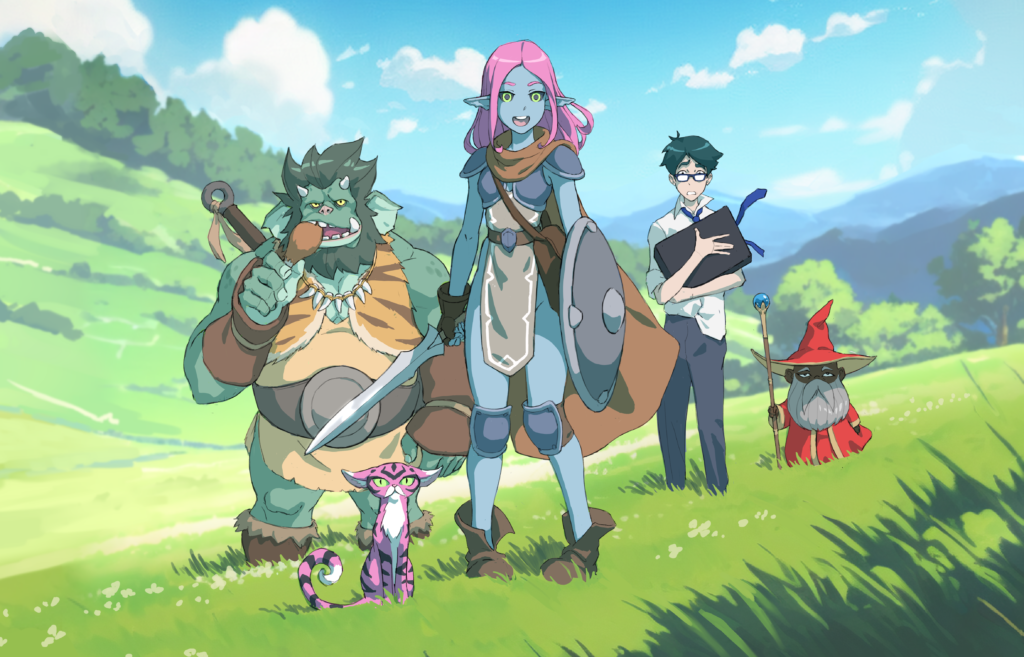
Before I go further, I want to clarify that I am not a game reviewer.
There are many bloggers who have much skill in this field and they dedicate themselves to an objective evaluation of games. I have a deep respect for this pursuit, and I believe academic study of games is important to their longterm health and development. This blog post is far more opinionated: what follows are my critiques on the game based on my personal expectations that Break largely failed to live up to.
character options
starting abilities
Each calling in Break begins with three respective starting abilities. These abilities are always the same and every character you make with that calling will behave similarly because of it. Given the tendency of players to most often play games at lower levels if not the first level, this leads to a low degree of replayability — especially for players like me who enjoy creating builds and tinkering with character concepts.
crafting limitations
Furthermore, each calling is allowed to learn a single pre-specified crafting discipline (such as alchemy or artificing) with the exception of Champion and Heretic, who cannot craft, and Factotum which can select any crafting discipline. This means, for example, that you can never play a Sneak who knows how to cook. This sucks. Obviously its easy enough to handwave as a GM, but it boggles my mind as to why this decision was made.
quirks
This brings me to the one-note flavor options the game insists upon:
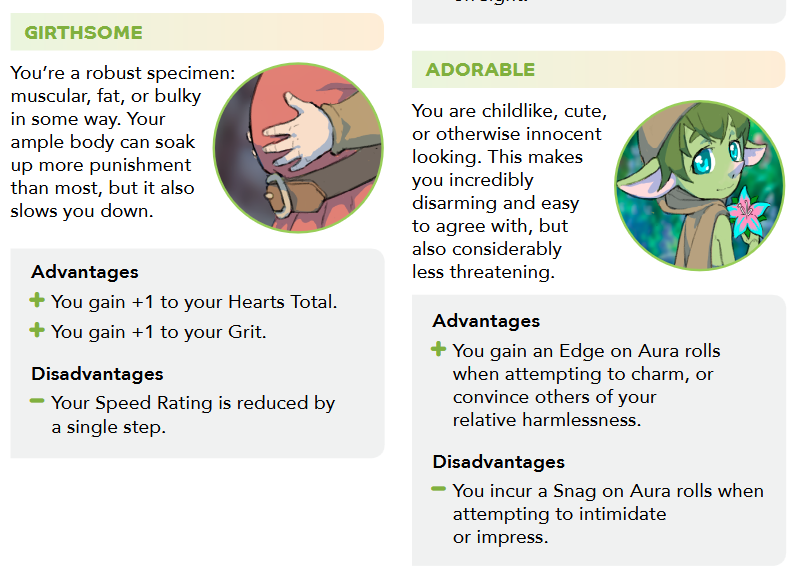
Each character gets exactly one quirk. “Inheritor” species can pick from spirit, physiology, and fate quirks. “Old World” species pick from spirit, physiology, or eldritch quirks; meanwhile Bio-Mechanoids pick from spirit and robotic quirks. The reduction of a character to single trait frustrates me, especially when every choice is given a small mechanical tweak that incentivizes you to pick certain ones based on your character concept. My issue is threefold:
- A defining characteristic should hold more mechanical weight than “you’re a little better at convincing people you’re harmless”.
- You shouldn’t be incentivized to make your character fat just so you can be more tanky.
- “Girthsome” (or any single quirk) should not be the primary thing that sets your character apart from other characters of the same calling and species.
Outside of the quirk system, a characters history & homeland determines purviews (equivalent to skills) and starting gear. These purviews are also annoyingly specific, but I take less issue with them because every character is going to get three minor bonuses to three specific situations, so there’s less of a push towards an optimized background.
magic
Finally, I take specific umbrage with the Sage.
As Break’s interpretation of the classic wizard, it’s reasonable to expect the calling to portray classic anime and Japanese RPG mages. This is not the case. Sages don’t even get “spells”. They get abilities — the same as every other calling — such as Glowing Ink or the ability to create a single Mana Grenade once per fight.
In combat spells alone, I want Fire I through Fire IV along with Volcano, Inferno, and Meteor. I want Swift Glintstone Shard, Great Glintstone Shard, Glintstone Cometshard, and Glinstone Icecrag. There should be eighty combat spell variants that do slightly different things for any self-respecting wizard to ponder and optimize her selection to handle any challenge. Outside of combat, there should be spells for planting flowers or cleaning laundry or removing rust from metal objects. There should be rituals for summoning rain or calming the skies. There should be enough magic that you have to carry a grimoire around to keep track of it all. These are the expectations that I have when the game tells me its inspirations are Final Fantasy and Earthsea.
design critiques
negotiations
The book’s gameplay section is divided into eight “Focused Rules” which are procedures for applying mechanics in specific situations. One such focused rule applies to negotiations — any time you attempt to influence an NPC’s thoughts or actions. This sub-chapter is five pages long and ultimately it describes using the standard mechanic for rolling a check. Despite negotiations ultimately being handled like any other test, the book places special emphases on identifying the primary negotiator or adding a minor bonus for bribes. This is no different from how you would use normal checks & contests for negotiation, and establishing it as a Focused Rule merely serves to add clutter.
specifics without extrapolation
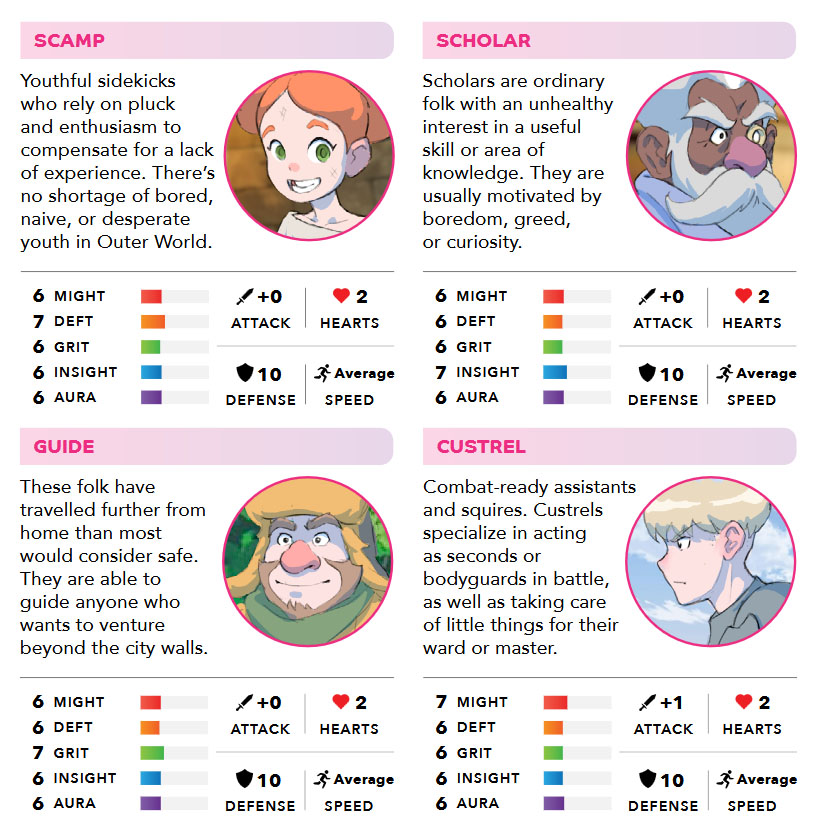
There are exactly four types of followers you can recruit. They have slightly different stats, which can change exactly twice through the use of downtime training. The existence of this mechanic implies that anyone who does not fit into these four archetypes cannot be recruited. The existence of these four archetypes implies that the game does not support the GM creating their own archetype. The existence of the specific implies the generic.
The game is filled with mechanics for unique situations and stat blocks for bespoke foes. There is a distinct absence of encouragement or support for creating your own. Followers are merely one case study of the book’s design philosophy. It extends to the crafting subsystem, where the book meticulously lists out the nine different additives you can imbue your weapons with along with a tiny footnote about “suggesting new items you’ve encountered as potential additives to your GM”. There is no such guidance for actually creating new materials or producing effects beyond what the book exhaustively outlines.
minor nitpicks
- hearts are weird? and bad
It’s clear that the game is pulling directly from The Legend of Zelda with its heart mechanic, but unlike Zelda, you’re really not going to get to 15 hearts by the end of the game. Hearts are extremely static — they don’t really scale with level, only situational bonuses. If you start with 2 hearts as a factotum, you will end the game at 5 hearts if you make it all the way to rank 10. Enemies can deal 2-3 hearts worth of damage per attack. A single heart is a massive percentage of your total health, yet getting one also feels incredibly un-impactful with the amount of damage you’re going to be taking.
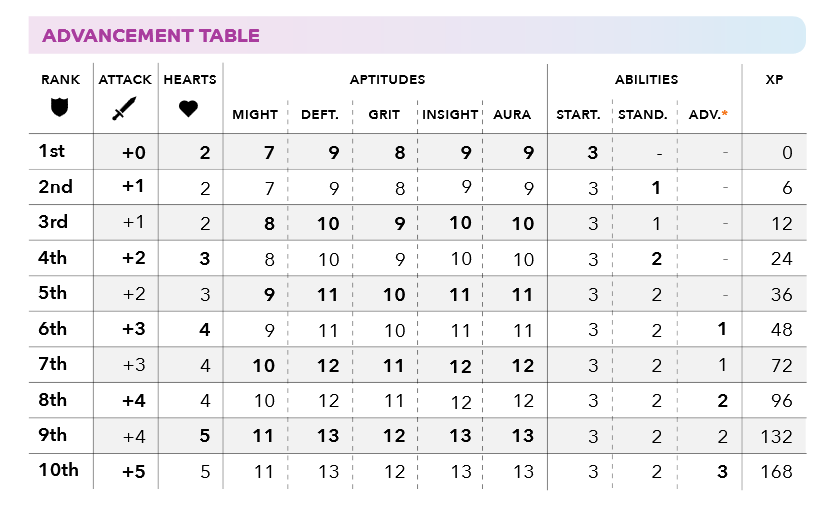
- boring progression
Gaining a rank in a calling is pretty boring. You add +1 to your stats every other level, and you get 1 new ability every other level. These abilities are also pretty boring.
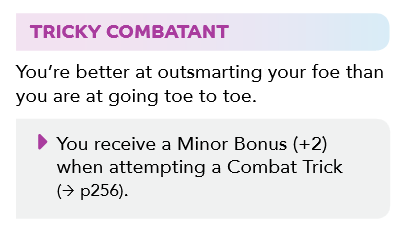
How do you think it feels to make it all the way to rank 6 to get a minor bonus on combat tricks? This is an advanced ability which cannot be taken until after rank 5. You will only ever get to have three of them — for that matter, you will only ever have eight total abilities, and three of those are your starter abilities.
i’m being a little unfair
It is extremely clear that Break!! is not the game I wanted it to be when I looked at the anime art and read the words “you can be a Murder Princess”. That doesn’t mean the game is bad in an objective sense: it’s just not the type of game I want to play.
What I do think is bad is the way the game tries to sell itself as a system for emulating anime and Japanese roleplaying games. I don’t think Break!! has the mechanics to support that gameplay. If someone told me they wanted to play a ttrpg inspired by Final Fantasy, I would strongly recommend a different system.
So who do I think Break!! is actually for? Beginners. I think Break!! is a great game for introducing people to tabletop roleplaying given the simplicity of the choices and clear layouts. The game excels guiding players through character creation and it’s extremely easy to understand what procedure to use for any given situation — all of which ultimately descend from the basic roll-under mechanic.
While it’s not the fantasy heartbreaker I’ve been searching for, I’m extremely happy to have Break!! on my shelf.
